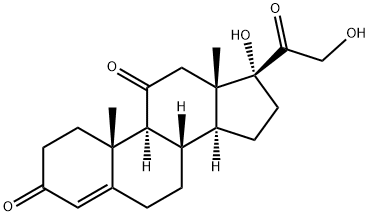PRODUCT Properties
| storage temp. | −20°C |
| solubility | H2O: 1 mg/mL, clear, colorless |
| form | powder |
| color | White to off-white |
| Merck | 13,136 |
| Sequence | Ser-Tyr-Ser-Met-Glu-His-Phe-Arg-Trp-Gly-Lys-Pro-Val-Gly-Lys-Lys-Arg-Arg-Pro-Val-Lys-Val-Tyr-Pro-Asn-Gly-Ala-Glu-Asp-Glu-Ser-Ala-Glu-Ala-Phe-Pro-Leu-Glu-Phe |
| CAS DataBase Reference | 9002-60-2 |
Description and Uses
Natural corticotropin is a 39-amino-acid polypeptide secreted by the anterior pituitary gland; it is obtained from animal pituitaries. The physiological activity resides in the first 24 amino acids (which are common to many species) and most immunological activity lies in the remaining 15 amino acids. The pituitary output of corticotropin responds rapidly to physiological requirements by the familiar negativefeedback homeostatic mechanism. As the t½ of corticotropin is 10 min and the adrenal cortex responds within 2 min, corticosteroid output can adjust rapidly.
Synthetic corticotropins have the advantage of shorter amino acid chains (they lack amino acids 25–39) which are less likely to cause serious allergy, although this does occur. Additionally, they are devoid of animal proteins, which are potent allergens. Tetracosactide (tetracosactrin) consists of the biologically active first 24 amino acids of natural corticotropin (from humans or animals) and so it has similar properties, e.g. t½ 10 min.
Hormone (adrenocorticotropic); glucocorticoid; diagnostic aid (adrenocortical insufficiency) Acthar (Sanofi Aventis); Cortrophin (Organon) [Name previously used: Corticotrophin].
Safety
| Symbol(GHS) |   GHS07,GHS08 |
| Signal word | Danger |
| Hazard statements | H317-H332-H334-H361 |
| Precautionary statements | P342+P311-P260-P280 |
| Hazard Codes | Xn |
| Risk Statements | 20/21/22-40 |
| Safety Statements | 22-36 |
| WGK Germany | 3 |
| RTECS | GM7900000 |
| F | 8-10 |
| HS Code | 2937190000 |
| Hazardous Substances Data | 9002-60-2(Hazardous Substances Data) |




![Tris(2,2,6,6-tetramethyl-3,5-heptanedionato)europium(III) [NMR Shift Reagent]](https://img.chemicalbook.com/CAS/GIF/15522-71-1.gif)